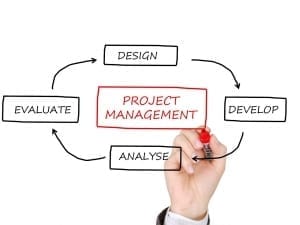Detailed Guide to Project Management Principles and Phases

A project manager often uses project management tools to make these tasks easier and more efficient. Further, every project has a set of principles and phases that help make the project workflow smoother. Let’s look at these principles and stages in detail.
Project Management Principles
While aiming for successful project management and delivery, following a set of principles can make the path to successful implementation easier. Below are some common project management principles that can be applied to any level of a project.
- Project planning
A good starting point for developing any project is clearly defining the goals and vision of the project. This helps plan the project structure. The PM can include work packages to be assigned to the project team; the project workflow chart; and the project milestones.
- Project structure
A clear project definition should be established at the beginning. This definition involves the entire project team at every step to facilitate smoother functions of the project.
- Transparency
Maintaining a certain level of transparency through the project management lifecycle helps everyone stay updated on the project’s progress. Ensure that you present an overview of the project status to the client or stakeholders at each stage of the project.
- Risk management
Risks are a part of any project, and it’s the role of a project manager to plan and budget for these risks. Also, keep in mind that every project is unique and has different goals, associated costs, appointments, and performance. Identifying these risks at the right time can help you address negative developments early on.
- Managing project disturbances
Developing strategies to overcome risks and roadblocks will help you stick to the project timelines. Your experience, skill set, knowledge, and instincts will help you identify and address risks in time.
- Project success
Project success can imply various things. Depending on the project goal and customer requirements, project success should be defined at the beginning of a project. It should include project terms and key measurable criteria for defining the project.
Project Management Phases
Almost every project management lifecycle goes through five phases. These project management lifecycle phases categorize what the project is about and how it will be carried out from the beginning to the end. Following are the five phases of project management:
- Initiation
This is the beginning of any project. At this stage, the project value, feasibility, and goal are determined. Generally, a business case report and a feasibility study are created before the project is approved or rejected.
- The business case report justifies the need for the project and the return on investment.
- The feasibility study comprises the project goals, deadlines, and budget.
- Planning
The next phase in the project management lifecycle is planning the project. This stage focuses on:
- Gathering a project team and creating workflow charts to meet project deadlines.
- Creating an accounting of the resources required, financing, and materials.
- Determining the risks associated with the project and how they’ll impact the project.
- Execution
Once the project planning is complete, the project execution begins. This stage starts with assigning the team members their tasks and monitoring the progress of these tasks.
- Monitor and Control
It is the project manager’s role to continuously monitor the project to ensure that it is progressing smoothly and as planned. This includes:
- Tracking the deliverables and ensuring that the planned quality of deliverables is met.
- Monitoring expenses and control cost changes.
- Close
The final stage in project management is closing the project. This stage comes after the project goals and objectives are met. Project closing includes the following:
- Ensure all the deliverables are complete.
- Close outstanding contracts and archive the paperwork.
To Conclude
This is just a brief idea of what the project management process entails. To get a thorough understanding of the project management process and all its aspects, opt for a project management professional course. The delivery of a project is just one of the elements in project management. It also involves quality, discipline, and goal-orientation, all of which can be developed by taking a professional certification course in project management.
